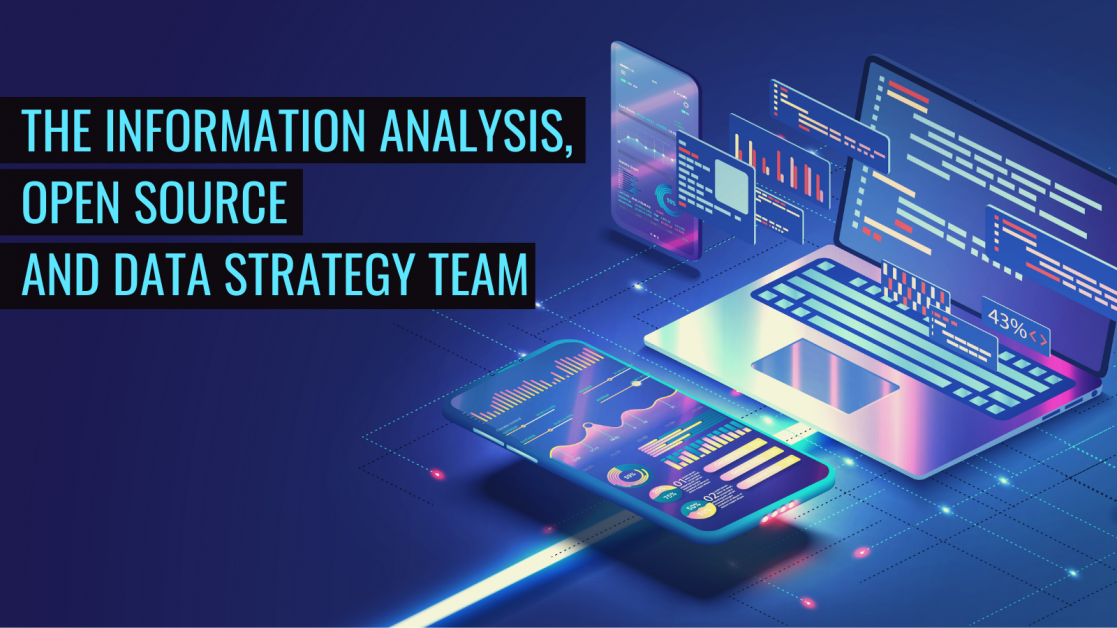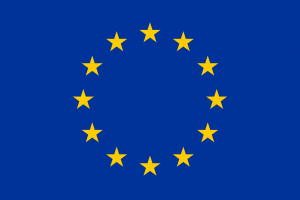Tackling disinformation: Information on the work of the EEAS Strategic Communication division and its task forces

The EEAS Strategic Communication Division and its Task Forces is placed within the Directorate for Strategic Communication and Foresight of the EEAS. The Division is leading the work on addressing foreign disinformation, information manipulation and interference and has a mandate to analyse the information environment in order to enable EU foreign policy implementation and protect its values and interests.
In addressing foreign disinformation, information manipulation and interference, the Division is developing and implementing targeted approaches to communicate and engage with audiences in geographic priority regions, mostly in the EU’s neighbourhood. These strategic communications efforts support EU policy implementation and the EU’s strategic interests in these regions. For this pro-active strategic communications work, the team combines a unique regional and language expertise with policy development, communication actions and data analysis to make the EU’s voice heard and provide factual information about the EU’s policy. The campaigns-based approach to communications comes hand in hand with strategic engagements, support to independent media and organised civil society, as well as trainings to EU Delegations and public communicators.
In its work, the Division cooperates closely with other EU institutions, Member States and international partners like the G7 and NATO, as well as with civil society organisations, researchers, journalists, media and private industry.
The mandate of EEAS Stratcom Division and its Task Forces is spelled out in a number of Council Conclusions. The original mandate for the East Stratcom Task Force stems from the European Council in March 2015. The Western Balkans Task Force and the Task Force South were subsequently set up to address similar threats in these two priority regions. The work of the whole Division has been further enhanced since 2015 to address the rapidly changing nature of the threat.
In December 2019, the General Affairs Council Conclusions with regard to the work of EEAS StratCom to tackle foreign disinformation, information manipulation and interference, confirmed the following three work strands: (1) pro-active communication and awareness raising, (2) support to independent media and (3) detect, analyse and challenge such activities of the threat actors. It explicitly broadens the mandate to new threat actors and geographic regions.
THE DIVISION HAS MULTIPLE OBJECTIVES.
- Its work strengthens the EU’s situational awareness of the tactics, techniques and procedures used by foreign actors to engage in disinformation, information manipulation and interference.
- It also develops policies, strategies and instruments to respond to the threat foreign disinformation, information manipulation and interference poses to the functioning of the EU’s democracies, security and the implementation of its policies. The aim is to put in place a comprehensive, sustainable and effective framework to tackle the threat in a whole-of-society approach
- Through awareness raising, strategic communications, civil society empowerment and support to independent media and media literacy, the Division contributes to building resilience against foreign disinformation, information manipulation and interference.
- The Division also uses its unique strategic communications, languages and regional expertise in local contexts to support the EU’s civilian missions and operations and EU Delegations.
- Its work on improving their capacity to address foreign disinformation, information manipulation and interference extends to partnerships with governments, media and civil society of neighbouring countries.
- Lastly, in all its efforts, the Division aims to build local capacity as well as international alliances and contributes to a shared understanding of and coordinated response to the threat.
The Division’s Structure
The Division comprises different teams. The Policy, Strategy and Global Priority Issues Team (PSG) deals with strategy and policy development, emerging threats, cooperation with Member States (including on Rapid Alert System on Disinformation) and international partners as well as other stakeholders. The Information Analysis, Open Source and Data Strategy Team works on analysis and assessment of the information environment, the development of sound and scalable methodology as well as analytical cooperation. The four Strategic Communications Task Forces cover the geographic priority regions in the EU’s Neighbourhood, Western Balkans and Sub-Saharan Africa.
The Policy, Strategy and Global Priority Issues Team (PSG)
The team works on issues and topics that cut across different regions and actors, working closely with the three Task Forces and the Information Analysis team. In particular, it works on policy and strategy development, such as the implementation of the European Democracy Action Plan. The team is coordinating the cooperation with EU and international partners. As such, it is in charge of managing the EU’s Rapid Alert System (RAS), which brings together EU Institutions and EU Member States to cooperate on tackling this threat. Additionally, a core element of EEAS Stratcom’s approach is the close cooperation with international partners, most notably NATO and the G7 Rapid Response Mechanism (RRM), but also bilaterally with likeminded countries and international networks.
When it comes to emerging foreign actors engaged in disinformation, information manipulation and interference, “EU-China: A Strategic Outlook” identifies China’s activities in that regard as a challenge that needs to be addressed. EEAS Stratcom’s work on China aims to increase the situational awareness and understanding of the methods of disinformation, information manipulation and interference by China outside of its borders. This is reinforced through regular exchanges with civil society and likeminded partners and feeds into designing responses to Chinese manipulative activities, ranging from policy development to exposure and awareness raising.
The team also works to strengthen the EU’s Common Security and Defence Policy by providing targeted support and trainings to CSDP missions and EU Delegations outside the EU’s Neighbourhood and Western Balkans area, especially on the African continent. These entities are often exposed to foreign disinformation, information manipulation and interference, which also poses a physical security threat to the EU’s CSDP infrastructure and its policies and reputation. By both investing in a better situational awareness and operational resilience, EEAS Stratcom supports CSDP missions and EU Delegations in coping with the threat.
The Information Analysis, Open Source and Data Strategy Team

This team identifies, analyses and assesses foreign disinformation, information manipulation and interference and provides evidence-based recommendations to reduce their scope. It also further calibrates the EEAS’ methodological approach and capabilities by building on best practices and exchanges with stakeholders. This way, it establishes a thorough understanding of the threat landscape and the threat level, including the ever-evolving tactics, techniques and procedures employed by foreign actors. To this end, it cooperates with a wide range of partners, contributing to a shared methodological understanding and approach among EU Member States and engaging with civil society, the private sector and international partners.
The Division’s geographic Task Forces
1. The East Stratcom Task Force

European Union, 2025
The East Stratcom Task Force (ESTF) focuses on strategic communication activities designed to support, promote, and explain EU policies and values within the Eastern Partnership and Central Asia regions. ESTF works in close collaboration with the EU Delegations, EU institutions, Member States, and local partners.
ESTF engages with a broad range of stakeholders, including civil society organizations, media community, and when relevant, government institutions in partner countries. Using the whole of society approach, the Task Force facilitates the cooperation of local partners to enhance societal resilience to FIMI.
ESTF delivers communication and raising awareness campaigns (for example "Share your Light" and "Free Press Talking") and communication products, tailored to the specific audiences and occasions. Moreover, the Task Force focuses on fostering connections and capacity building through various activities, as for example the Media Forum 2024 in Astana, Kazakhstan. ESTF strives to promote cross-border and cross-regional cooperation, facilitating exchanges of best practices, including with partners from other regions and continents.
With Ukraine remaining as a target of Russia’s aggression, and the invasion's impact going well beyond the region, ESTF keeps Ukraine-related work at the core of its activities.
2. Western Balkans Task Force

European Union, 2024
The Western Balkans Task Force (WBTF) is engaged in a full spectrum of strategic communication activities that support the implementation and understanding of the EU policy in the region. These take the form of public campaigns and strategic engagements with partners and stakeholders. One of the examples of WBTF work is its yearly campaign “Europeans in Action”. Targeted at both EU and Western Balkans audiences, the campaign aims to reinforce the message of engagement and to contribute to a friendly and factual perception of the region in the EU.
By practicing public and cultural diplomacy, WBTF seeks to go beyond traditional information channels and translates its actions into effective and varied communication products, all adapted to the local context and languages. The WBTF is engaged in addressing FIMI operations, including disinformation in the Western Balkan region. The WBTF also strengthens the support to representatives of civil society, including independent media and media organisations as well as fact-checking organisations. It actively engages with them, as part of a dedicated strategy to enable a pluralistic information environment and contribute to media literacy in the region.
3. The Task Force South

European Union, 2025
The Task Force South (TFS) analyses the information environments of the Middle East and North Africa (MENA) region by tracking disinformation and FIMI in the region. Using its strategic insights to inform communication activities, TFS designs proactive communication strategies and campaigns by coordinating EU Delegations and other EU institutions.
TFS also fosters healthier information environments in the MENA region by supporting independent journalists as well as contributing to civil society resilience against disinformation and FIMI. In particular, TFS designs and implements tailored systemic and tactical responses using all means available in the stratcom toolbox. In close collaboration with the EU’s Regional Media Office in Amman, TFS also launched the social media accounts of EU in Arabic on X, Instagram, and Facebook, and supports the work of the EU Spokesperson in Arabic.
4. Sub-Saharan Africa Stratcom Task Force

European Union, 2025
The Sub-Saharan Africa Stratcom Task Force (SSA TF) was launched in May 2023. Its main objectives include monitoring of the information environment, raising the EU’s profile through strategic communication, and building resilience against FIMI and disinformation.
Beyond the EU institutions, including the EU Delegations in Sub-Saharan Africa, the EU Member States, the SSA STF is working closely and actively with stakeholders in the partners countries, such as civil society organisations, media communities and institutions.
The SSA STF works closely with journalists and media professionals from across the region, including through immersive visits to Brussels. Beyond their informative purpose, these visits also provides practical support through workshops and interactive simulations, enabling participants to strengthen their resilience against disinformation. Through this interactive format, the team establishes networks of trust.
The SSA STF launched a communications Campaign “Above the Noise”. The campaign listens to African youths in Benin, Chad, Ghana, Nigeria and South Africa and responds to their concerns or questions.
Connecting Media Communities
All Task Forces and other teams are involved in the Connecting Media Communities project. Launched in 2023, its goal is to provide a space for media communities from different regions to exchange best practices, better understand FIMI and disinformation, and strengthen the resilience of our societies. The events took place in Bosnia and Herzegovina, Moldova and Kosovo, with approximately 100 participants from all over the world taking part in each of them. Within this project, journalists also had the opportunity to visit Ukraine and see with their own eyes the consequences of Russia’s full-scale aggression. Supported by the EEAS, the joint work of journalists, media workers and fact-checkers strengthens the community of FIMI defenders and highlights the role of local media in combating FIMI and fostering democratic values.




